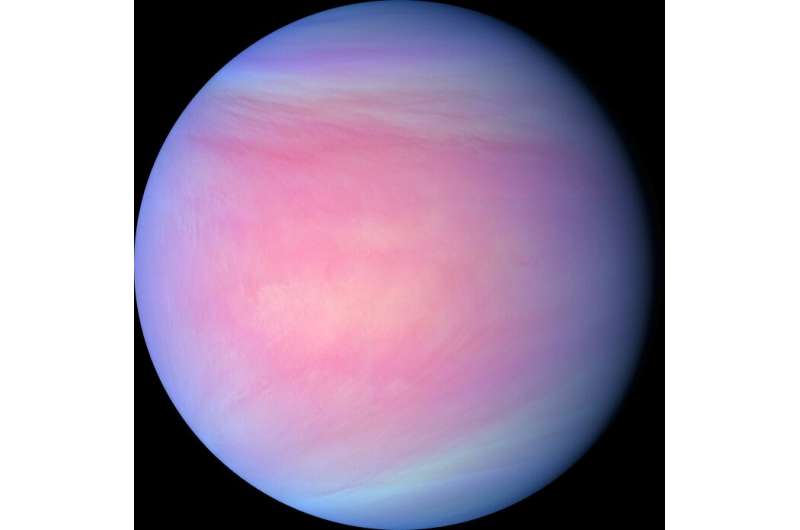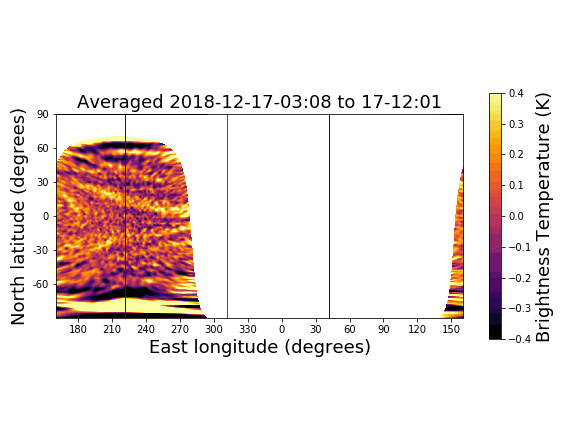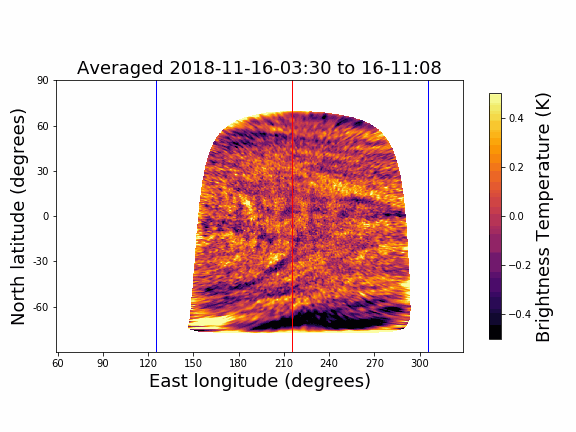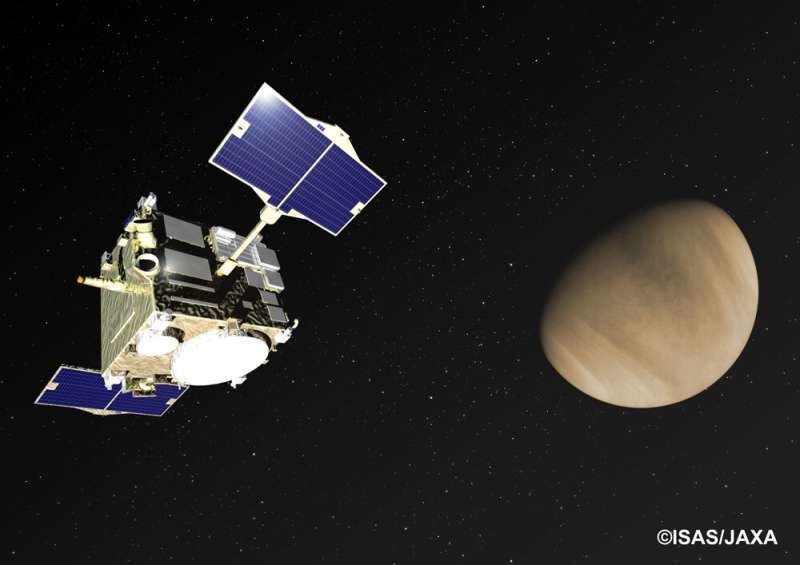Venus puts on variety show among its cloud tops

Studies of the cloud-tops of Venus by JAXA's Akatsuki spacecraft show striking variety in wind speeds year-on-year and between the planet's northern and southern hemispheres. The first fine-scale observations of cloud-top temperatures have also revealed a tendency for clouds to converge towards the equator at night, in contrast to poleward circulation seen previously in daytime studies.
The results, which have been presented today at the EPSC-DPS Joint Meeting 2019 in Geneva, provide new insights into the mystery of why the Venusian atmosphere rotates much faster than the planet itself.
Prof Masato Nakamura, Project Manager of Akatsuki at JAXA, said: "The Venusian 'super-rotation' is most pronounced at the tops of Venus's clouds, making this an important region for understanding the dynamics of the planet's atmosphere. The Akatsuki mission is in a highly elliptical orbit around Venus that enables the spacecraft to image both the north and south hemispheres of the planet simultaneously."
An international team of researchers has used advanced cloud-tracking and quality control techniques to analyze with high accuracy the direction and speed of cloud top winds using data collected by the Ultraviolet Imager (UVI) instrument over three years.
The study, led by Prof Takeshi Horinouchi of Hokkaido University, Japan, and Dr. Yeon Joo Lee of JAXA/ISAS and TU Berlin, found that the super-rotation speed at the cloud tops not only changes over time but is different in the northern and southern hemispheres. The team also detected planetary-scale atmospheric waves at the cloud tops, which may interact with the super-rotation.

The degree of difference between the hemispheres, or "asymmetry," may be linked to a second mystery at Venus: an as-yet unidentified chemical species in the atmosphere that strongly absorbs ultraviolet radiation from the Sun.
Prof Horinouchi said: "The asymmetry in super-rotation speeds in cloud tops in the northern and southern hemispheres might be caused by variability in the distribution of the so-called 'unknown' ultraviolet absorber, which plays a key role in regulating how much radiation from the Sun that Venus can absorb. Our results provide new questions about the atmosphere of Venus, as well as revealing the richness of variety of the Venus atmosphere over space and time."
A separate study has revealed a detailed picture of Venus's cloud temperatures for the first time on both the dayside and nightside of the planet. A team from the University of Tokyo, Rikkyo University and the National Institute of Advanced Industrial Science and Technology in Japan tracked the development over time of mottled clouds and streaky features in imagery from Akatsuki's LIR infrared camera.

The observation of cloud motions throughout the day and night has enabled the team to determine the average circulation in north-south directions and to detect thermally driven tides that create waves in the atmosphere and could play a key role in maintaining the super-rotation.
Mr Kiichi Fukuya of the University of Tokyo, who presented the results at the EPSC-DPS Joint Meeting 2019, said: "The most exciting discovery is the frequent occurrence of equatorward motions on the nightside—this is in contrast to the strong poleward circulation on the dayside we have observed previously at other wavelengths."

The findings suggest that there are as-yet unknown processes that are affecting cloud formation and atmospheric dynamics."Akatsuki team members have been presenting their hottest topics today at the EPSC-DPS Joint Meeting 2019. The main goal of Akatsuki is to understand the Venusian atmospheric dynamics and cloud physics, which is quite different from that of the Earth. As the culmination of these studies, we believe that we will give a definitive answer how the super-rotation is maintained at Venus very near future," said Prof Nakamura.
Provided by Europlanet Society





















